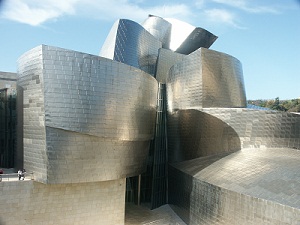
Last time we explored the effects my time in Costa Rica and learning Spanish had on my ability to create. Now I’m going to tell you about a night that changed my life, a night that sent me in a whole new and enlivening direction of creativity and creative exploration.
On the evening of the last day of our language immersion classes, my girlfriend and I, armed only with our rudimentary Spanish skills, went in search of a rodeo in a small village. Aided on by the spirit of adventure, many gestures and pointing, and the light of the moon, we eventually found our destination and enjoyed the locals’ willingness to honor our attempt to communicate. Without the ability to communicate in English, the whole evening became an intoxicating experience of creativity in action, the piecing together of basic words and primitive gestures to exchange both information, and more importantly, appreciation with others. A family taught us the basics of salsa dancing. I played Foosball with the local kids. And I wrestled with the children in the bull ring, pretending I was the wild bull and they the bullfighters, Los Matadores.
That evening had a profound impact on me. I saw both the positive impact learning another language and living in another culture would have on my creativity and my life-long development as a creator. That night, I knew I had to finish my Masters of Architecture while concurrently learning Spanish and looking for ways to carry out my studies in Spanish-speaking countries, which I did. The following year I traveled to Havana, Cuba to work on a design build project there, then to Cuernavaca, Mexico to design and build a children’s library. At the end of my studies in the United States, I moved to the Basque Country in Northern Spain as a teacher’s assistant for Aesthetics and Composition and to study Architecture and Urban Design at La Universidad del Pais Vasco, in San Sebastian (Donostia). The professor for whom I worked, Javier Cenicacelaya, offered me a job in his studio and the next year I moved to Bilbao, within a ten minute walk of the Frank Gehry’s masterpiece, The Guggenheim Museum of Bilbao.
During my two hour lunch break (are the Spanish not geniuses of the need of both the stomach and the heart?) I would spend time at the museum, taking in one or two rooms per visit. With my English on hold, and my abilities as a Spanish speaker growing everyday, I would plant myself in front of a painting or sculpture –Kandinsky, Corbusier, Koons, the study models of Frank Gehry — and just let their works wash through me. I felt in my body, there was no sense of thinking I should know anything. It was simply pure experience, the conceptual filter between the art and the viewer removed, the joy of pure creative experience setting my heart ablaze.
Learning another language won’t guarantee that you’ll be more creative. But the way your brain gets challenged and rewired and the rifts between the way you think of things in your native tongue and the way your perception shifts when working in the other language is incredibly powerful. It creates gaps, curiosities, and fissures that undermine habit and allow creative insight to enter.
I must say, I also started a regular meditation practice when I moved to Bilbao, meditating one half hour each morning and another half hour after work. And the combination of the regular meditation and learning another language were incredibly powerful for creativity. But I’ll save the meditation piece for another time.